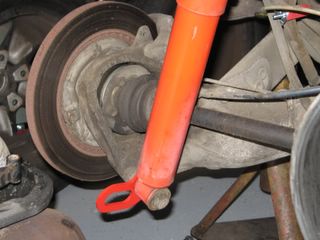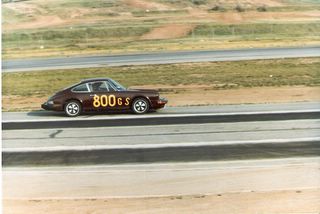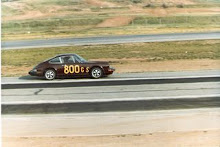It’s been a while since I’ve made a post but this post comes with progress. At least it feels like progress … sure has been a long time coming. This weekend (Memorial Day weekend) I managed to actually get the fender flares attached to the 1974 Porsche 911. This took a few hours finalizing the sheet metal (pretty much me beating the crap out of the area where the flares attach so that it resembles a sack of walnuts). With the sheet metal in order primer was applied – and now I know why even something as seemingly simple as blowing paint on a car takes practice – not as easy as it looks. My son Michael helped with the primer, masking and clean-up so at least we had some fun.
I gave the primer the night to cure and the next morning set about actually gluing the flares to the car. This took about an hour of final fitting (you can never be too close) and then on with the panel adhesive. For those of you who may care, I used Fusor # 127EZ. Liberally applied one set of tubes (it’s a two-part adhesive) was enough for both flares. You have about an hour of working time and the flares were set well within this time. I also glued my shorts to my leg hair but that’s another story.
Twenty-four hours later (actually more like twenty-eight) I pulled the screws and the flares stayed on, a good sign for sure. Even with some tugging everything looks to be staying place. Today I actually spread some filler, the heavy-duty Mar-Glass that includes fiber glass strands in with the filler. The stuff a bit messier then normal body filler but a lot stronger and does a great job of smoothing the gap around the flare. I’ll do the rough and then hire someone with skill to do the actual finish work. Also used some seam sealer to ensure that the fit between the wheel wells and flares are water tight.
I’ll put this weekend down as a win.































